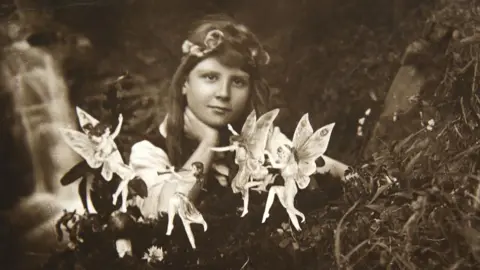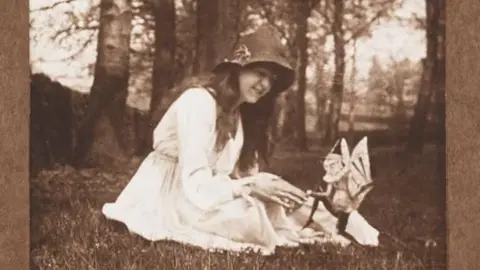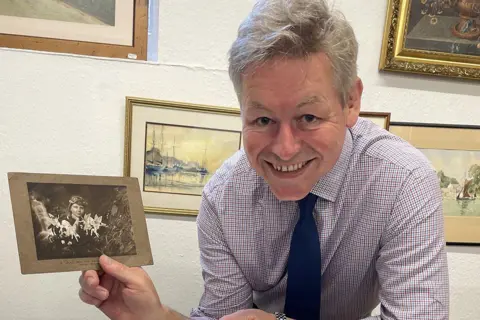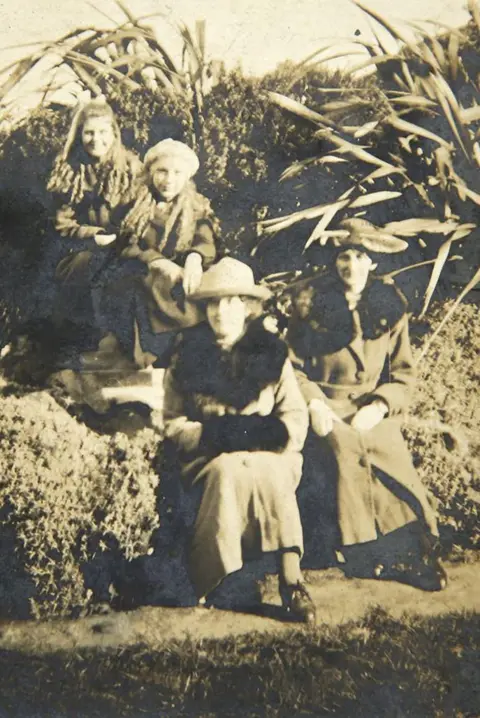 David Whittaker
David WhittakerA woman who “spent her whole life believing in fairies” was horrified to learn the world-famous Cottingley Fairies photographs were a hoax, her son has revealed.
The images, taken by Frances Griffiths and Elsie Wright between 1917 and 1920, apparently depicted the cousins surrounded by magical creatures in a garden in Bradford.
David Whittaker said his mother Mary Anderson had been given a set by best friend Frances and had been convinced they were real but wanted to throw them out when Elsie confessed they were fake in 1983.
However, he saved them and two of the five photos are due to go under the hammer in Louth, Lincolnshire.
 David Whittaker
David WhittakerThe pictures became a worldwide sensation when Sherlock Holmes author Arthur Conan Doyle published them in 1920, believing them to be authentic.
They had been examined by experts and one of them was commissioned by Bradford’s Theosophical Society to produce a number of prints to be sold.
Frances passed a set to Mary, who “totally believed” they were genuine, said Mr Whittaker, adding that she showed them to neighbours and family members.
When Elsie revealed the fairies had been made out of paper cut-outs and hatpins, Mary “felt so let down”, her son said.
“She brought out the photographs and the archive of material she had collected over the years and told us to throw it all out,” said the 85-year-old, who lives in Saltfleetby.
“It was only because my wife intervened and offered to take care of it in case she changed her mind that it did not end up in the dustbin.
“Mother never did change her mind.”
 John Taylors Auction Rooms
John Taylors Auction RoomsThough Elsie maintained none of the images were real, Frances insisted one was genuine and that the pair had seen fairies by the beck in Cottingley.
Two photographs in original wallets will go to auction on Tuesday, as well as a photo of Mary and Frances on an outing in the early 1920s.
An archive of material will also go under the hammer.
“We’re not actually concerned about value, we are more concerned it will go to someone who will look after and respect them,” Mr Whittaker said.
 David Whittaker
David WhittakerAuctioneer James Laverack, from John Taylors Auction Rooms, said the “very rare” photos were “the first high quality prints to be made of the glass plate negatives.”
He said the photographs were “wonderful things to have in the auction” and that they were “delighted” to take them to auction.
One of the lots is expected to fetch more than four figures, the auction house added.




